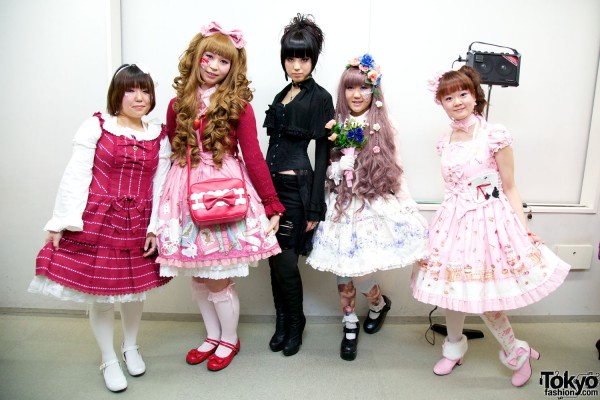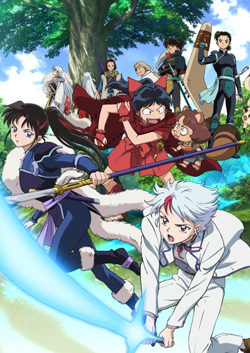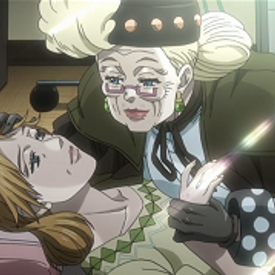[Author’s Note: This article deals with defining the differences between Lolita fashion and the “lolita complex.” As such, there is some discussion of sexuality and pedophilia, which may not be appropriate for children under a certain age. Please read with the understanding that the author does NOT in any way condone pedophilia, and merely wants to point out the grave injustice of subjecting entire groups of women – and anime fans – to a complex they do not wish to be a part of. That all being said, this post will not deal with explicit material in any form, because the author just downright doesn’t like that sort of thing in the least.]

A very prevalent facet of anime is the adorable female character, and the concept of “lolicon” and “Lolita,” which are actually separate ideas. Regardless of an interest in anime, Lolita fashion has become very popular in the United States, as well as other areas of the Western world, to the point where it’s important to separate and completely understand the terms in order to have meaningful discussion without enormous assumptions regarding questionable sexual practices.
Contrary to popular Western belief, the Japanese Lolita fashion, which has become synonymous with all that is cute and Victorian-inspired, has absolutely nothing to do with the novel by Vladimir Nabakov – and even less to do with the novel’s themes of pedophilia and morality. The term “Lolita” was coined because of Japan’s relations with Portugal; the Japanese took the word “Lolita” to mean anything that is cute. [Historical note: Japan’s borders were closed to the West for many centuries, and Portugal was the first Western country allowed to trade with Japan. There are many Portuguese-based loan words in the Japanese language, such as “pan,” which means “bread.”]
While it is difficult to pinpoint the origins of Lolita specifically, it is well-known within the Lolita community (which certainly varies in terms of styles and types) that Lolita as a subculture is taken on without the intention of attracting the mature male gaze. Individuals who take on Lolita are usually young women, probably between the ages of 18 and 30, who have a genuine interest in cute things, frilly underskirts, and platform Mary-Janes. This adaptation of innocence and extreme femininity can, perhaps, be seen as a way of taking back their sexuality from men, rather than pandering to it; they are not interested in meeting up with a female sexual ideal, but would rather hold on to their youth and their freedom.
Of course, like every move made by women to declare independence, Lolita, too has been usurped and utilized in a way that goes against intention. “Lolicon” specifically refers to what we call the “Lolita complex,” or someone with an attraction to young or young-looking women. It is an unfortunate truth that more and more modern anime are pandering to a largely male audience who does not seem to take into consideration their objectification and victimization of young women. The term “moe” is used frequently in anime, and while the word itself has many definitions, it has mostly taken on the role of describing series that feature hoards of pre-adolescent female characters who blush at the drop of a hat and wear very tiny school uniforms. Young women are not always treated kindly in Japanese media, and the prevalence of lolicon and moe animanga is evidence of a huge gap in the collective Japanese awareness of feminism (and then some).
But here is the real clincher: THIS STUFF SELLS IN AMERICA, TOO. It’s very difficult, as a nearly-twenty-three-year-old-woman, to seriously tell someone, “Oh, I like anime,” when the listener’s chief understanding is that anime is woman-hating, loser-man pandering garbage. Anime (and Lolita fashion) has a really bad rap, and it’s because a majority of series really go for putting in as much of what they call “fanservice” as possible. This is why many people don’t admit to loving animation – especially Japanese animation; people still think of it as something that is strictly for children, and therefore assume that any adult who still likes such a thing is either a mentally/emotionally childish, or else really into children and wants to have something to talk to little kids about.
I want to lay this all out there for everyone to hear: Animation was never intended for a solely child audience – in the same way that comic books weren’t. The concept of simple ideas and characters appealing only to children is fairly recent (say, after the Censorship Laws were passed in the 1930s…). Beyond that, not every anime in the world is about sating the irrepressible lust of pimply gaijin (foreigner) men who like tiny Asian girls for the myriad of absurd reasons men are given to like Asian girls. Every single anime fan I know watches anime because they appreciate stories told from a different cultural point of view, they enjoy/study animation, they are artists, and/or they grew up with it (in which case, most of them grew up to be artists or animators or cultural historians or people who write long ranty blog posts or some combination thereof).
This post was initially going to focus on the Lolita subculture and why it should be given more credit – and I think that’s more or less come across. But I also really want people to know that it’s not just Lolita that gets misconstrued; anime as a genre gets lumped into one category depending on the person you ask about it, and it rarely ever lives up to that definition, merely because the categories are too broad. Before you judge someone on what you perceive they enjoy, please find out what exactly it is they enjoy. And if you ever, ever hear the words “moe” or “lolicon,” head for the hills; and beware of “Lolita,” because while it is not actually anything shameful, it is a term that will get misused – even by Lolitas and by anime fans.











Recent Comments